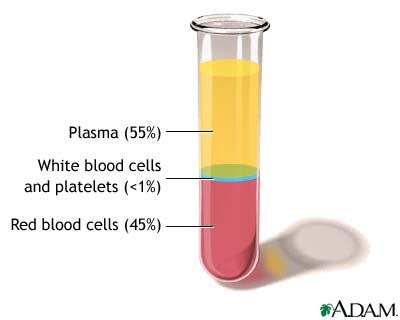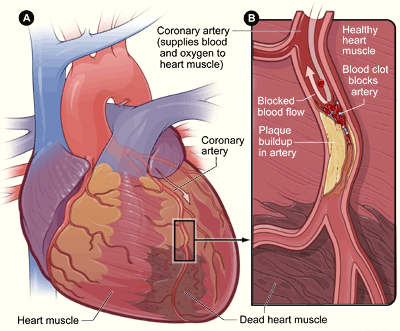английский за проф направлением. Укладач Триполець В.І. Рецензенти
 Скачать 4.04 Mb. Скачать 4.04 Mb.
|
|
10. What network connects the arteries and veins? 2. Continue the following sentences.
3. Match the anatomical terms and their definitions. 1  . Period of relaxation and expansion of the heart when its chambers fill with blood. 2. Valves located between the atria and ventricles. 3. Minute blood vessel that connects arterioles with venules. 4. Series of events that occur in the heart during one complete heartbeat. 5. Small artery. 6. Thin membrane lining the interior of the heart. 7. Lubricating outer layer of the heart wall and part of the pericardium. 8. Cardiac muscle layer of the heart wall. 9. Tough, fibrous, two-layered membrane sac that surrounds, protects, and anchors the heart. 10. System of blood vessels that transports blood between the heart and lungs. 11. System of blood vessels that transports blood between the heart and all parts of the body other than the lungs. 12. Rhythmic contraction of the heart. 13. Either of two large veins that return blood to the right atrium of the heart. 14. Small vein. . Period of relaxation and expansion of the heart when its chambers fill with blood. 2. Valves located between the atria and ventricles. 3. Minute blood vessel that connects arterioles with venules. 4. Series of events that occur in the heart during one complete heartbeat. 5. Small artery. 6. Thin membrane lining the interior of the heart. 7. Lubricating outer layer of the heart wall and part of the pericardium. 8. Cardiac muscle layer of the heart wall. 9. Tough, fibrous, two-layered membrane sac that surrounds, protects, and anchors the heart. 10. System of blood vessels that transports blood between the heart and lungs. 11. System of blood vessels that transports blood between the heart and all parts of the body other than the lungs. 12. Rhythmic contraction of the heart. 13. Either of two large veins that return blood to the right atrium of the heart. 14. Small vein.a) cardiac cycle; b) myocardium; c) systemic circulation; d) venule; e) arteriole; J) diastole; g) pericardium; h) vena cava; i) capillary; j) systole; k) atrioventricular valves; I) endocardium; m) pulmonar circulation; n) epicardium 4. Read and translate the following proverb. What is it about? Do you agree with the saying? Discuss it in groups. A merry heart does good like a medicine. IV. Speaking. Make a dialogue between a cardiologist and a patient. Here is vocabulary for you to speak about heart problems.
V. Supplement. Text I 1. Match the following English word combinations with the Ukrainian ones: 1) bone marrow a) кровообіг 2) nutrients b) процес згортання крові 3) life span c) кістковий мозок 4) cancer cells d) поживні речовини 5) blood stream e) ракові клітини 6)clotting process f) тривалість життя 2. Read and translate the following text. Be ready to discuss the information obtained. 3. Find 7-10 sentences characterizing the structure of the blood. Translate them in written form. T  YPES OF BLOOD CELLS YPES OF BLOOD CELLSHumans can't live without blood. Without blood, the body's organs couldn't get the oxygen and nutrients they need to survive, we couldn't keep warm or cool off, fight infections, or get rid of our own waste products. Without enough blood, we'd weaken and die. The average adult has between 5 to 6 liters of blood or blood volume. The blood carries oxygen and essential nutrients to all of the living cells in the body, and also carries waste products to systems that eliminate them. Most of the blood is made up of plasma. A little less than half of this blood volume is composed of red and white blood cells, and other solid elements called platelets. So, the blood contains three types of blood cells: l) red blood cells (RBCs);
In babies and young children, blood cells are made within the bone marrow (the soft tissue inside our bones) of lots of bones throughout the body. But, as kids get older, blood cells are made mostly in the bone marrow of the vertebrae (the bones of the spine), ribs, pelvis, skull, sternum (the breastbone), and parts of the humerus (the upper arm bone) and femur (the thigh bone). The cells travel through the circulatory system suspended in a yellowish fluid called plasma. Plasma is 90 % water and contains nutrients, proteins, hormones, and waste products. Whole blood is a mixture of blood cells and plasma. Red blood cells (also called erythrocytes) are shaped like slightly indented, flattened disks. RBCs contain the iron-rich protein hemoglobin. Blood gets its bright red color when hemoglobin picks up oxygen in the lungs. As the blood travels through the body, the hemoglobin releases oxygen to the tissues. The body contains more RBCs than any other type of cells, and each has a life span of about 4 months. Each day, the body produces new red blood cells to replace those that die or are lost from the body. White blood cells (also called leukocytes) are a key part of the body's system for defending itself against infection. They can move in and out of the bloodstream to reach affected tissues. The blood contains far fewer WBCs than red cells, although the body can increase production of WBCs to fight infection. There are several types of WBCs, and their life spans vary from a few days to months. New cells are constantly being formed in the bone marrow. Several different parts of blood are involved in fighting infection. White blood cells called granulocytes and lymphocytes travel along the walls of blood vessels. They fight germs' such as bacteria and viruses and may also attempt to destroy cells that have become infected or have changed into cancer cells. Certain types of WBCs produce antibodies, special proteins that recognize foreign materials and help the body destroy or neutralize them. The white cell count (the number of cells in a given amount of blood) in someone with an infection often is higher than usual because more WBCs are being produced or are entering the bloodstream to battle the infection. After the body has been challenged by some infections, lymphocytes "remember" how to make the specific antibodies that will quickly attack the same germ if it enters the body again. Platelets (also called thrombocytes) are tiny oval-shaped cells made in the bone marrow. They help in the clotting process. When a blood vessel breaks, platelets gather in the area and help to seal off the leak. Platelets survive only about 9 days in the bloodstream and are constantly being replaced by new cells. Important proteins called clotting factors are critical to the clotting process. Although platelets alone can plug small blood vessel leaks and temporarily stop or slow bleeding, the action of clotting factors is needed to produce a strong, stable clot. Platelets and clotting factors work together to form solid lumps to seal2 leaks, wounds, cuts, and scratches and to prevent bleeding3 inside and on the surfaces of our bodies. When large blood vessels are severed (or cut) the body may not be able to repair itself through clotting alone. In these cases, dressings4 or stitches are used to help control bleeding. Blood contains other important substances, such as nutrients from food that has been processed by the digestive system. Blood also carries hormones released by the endocrine glands and carries them to the body parts that need them. Blood also carries carbon dioxide and other waste materials to the lungs, kidneys, and digestive system to be removed from the body. Notes: 1 germ — мікроб, бактерія 2 to seal — щільно закривати, блокувати 3 bleeding — кровотеча 4 dressing — перев'язування (рани) 4. Answer the questions.
5. Say whether the following sentences are true or false. 1. Without blood, the body's organs could get the oxygen and nutrients they need to survive.
6. Fill in the table and compare your findings with your partner's.
7. Read and memorize the English idioms containing the word blood. One's flesh and blood — a relative — родич. To make one's blood boil (informal) — to make one angry — довестикого-небудьдосказу. То run in the blood— to be characteristic of family members (usually of a certain feature of character, behaviour, ability, etc.) — бути у крові (це у нього в крові; родинне). Text 2
HEART ATTACK Each year over a million people in the U.S. have a heart attack. About half of them die. Many people have permanent heart damage or die because they don't get help immediately. It's important to know the symptoms of a heart attack. Those symptoms include: • Shortness of breath.
• Nausea, vomiting, dizziness, lightheadedness2, sweating. M  ost heart attacks happen when a clot in the coronary artery blocks the supply of blood and oxygen to the heart. Often this leads to an irregular heartbeat — called an arrhythmia — that causes a severe decrease in the pumping function of the heart. A blockage that is not treated within a few hours causes the affected heart muscle to die. ost heart attacks happen when a clot in the coronary artery blocks the supply of blood and oxygen to the heart. Often this leads to an irregular heartbeat — called an arrhythmia — that causes a severe decrease in the pumping function of the heart. A blockage that is not treated within a few hours causes the affected heart muscle to die.Heart attacks occur most often as a result of a condition called coronary artery disease (CAD). In CAD, a fatty material called plaque builds up over many years on the inside walls of the coronary arteries (the arteries that supply blood and oxygen to your heart). Eventually, an area of plaque can rupture, causing a blood clot to form on the surface of the plaque. If the clot becomes large enough, it can mostly or completely block the flow of oxygen-rich blood to the part of the heart muscle fed by the artery. During a heart attack, if the blockage in the coronary artery isn't treated quickly, the heart muscle will begin to die and be replaced by scar tissue. This heart damage may not be obvious, or it may cause severe or long-lasting problems. Severe problems linked to heart attack can include heart failure and life-threatening arrhythmias (irregular heartbeats). Acting fast at the first sign of heart attack symptoms can save your life and limit damage to your heart. Treatment is most effective when started within 1 hour of the beginning of symptoms. If you think you or someone you know may be having a heart attack:
• Take a nitroglycerin pill if your doctor has prescribed this type of medicine. Once at the hospital, doctors can perform several tests to quickly determine if the person is having or has had a heart attack and the best course of action to restore blood flow. Each year, about 1.1 million people in the United States have heart attacks, and almost half of them die. CAD, which often results in a heart attack, is the leading killer of both men and women in the United States. Many more people could recover from heart attacks if they got help faster. Of the people who die from heart attacks, about half die within an hour of the first symptoms and before they reach the hospital. But you can help reduce your risk of heart disease by taking steps to control factors that put you at greater risk. Heart-healthy nutrition3, daily physical activity, eliminating tobacco, controlling diabetes and a commitment to follow your healthcare professional's recommendations (including for cholesterol and high blood pressure) are all part of reducing your risk for heart disease, heart attack and stroke. Notes: 1 squeezing — стиснення, здавлювання 2 lightheadedness — запаморочення 3 nutrition — харчування 3. Read the text closely and answer the questions.
|
